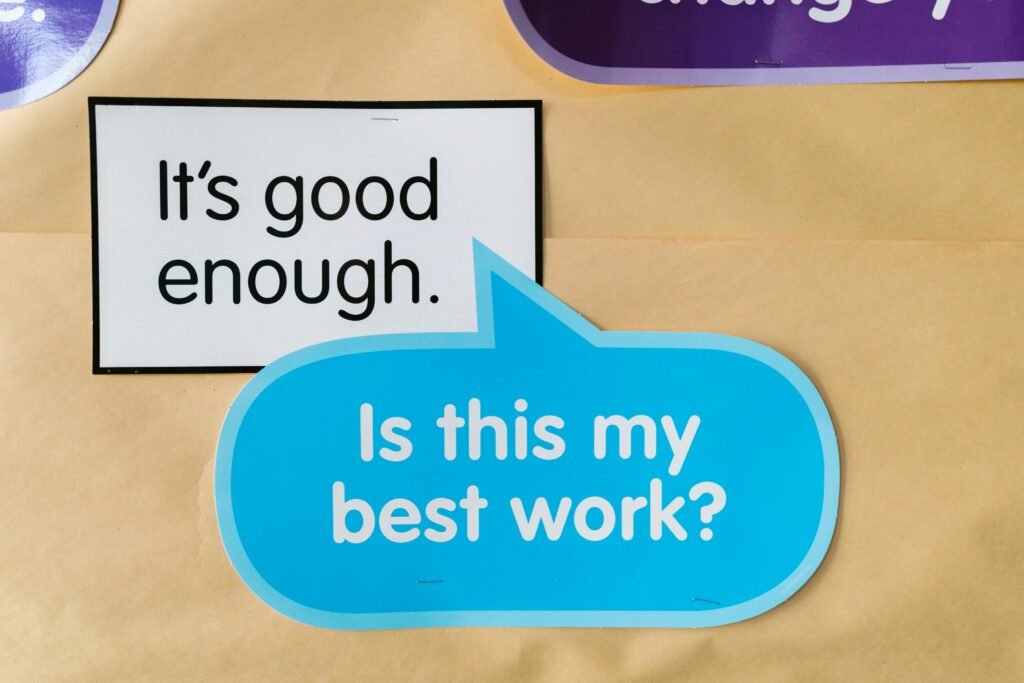All-or-nothing thinking, also known as dichotomous or black-and-white thinking, is a type of cognitive distortion. This mindset leads individuals to view situations in extreme terms, acknowledging no middle ground. For example, one might see their performance as either a total success or an utter failure, leaving no room for the nuances in between.

Understanding and addressing all-or-nothing thinking is crucial for improving mental health and well-being. By recognizing these rigid thought patterns, we can learn to navigate life’s complexities with more flexibility and resilience. This shift not only enhances our mental health but also promotes emotional stability and personal growth.
Understanding All or Nothing Thinking
All-or-nothing thinking, also known as dichotomous thinking or black-and-white thinking, is a cognitive distortion that simplifies complex realities into two opposing categories. This pattern often ignores the subtle nuances and middle ground that exist in most situations.
The Psychological Reasons Behind Dichotomous Thinking
The roots of all-or-nothing thinking can be traced to our cognitive processes. This type of thinking often stems from an individual’s desire for certainty and control. By categorizing experiences into extremes, we create a sense of order and predictability. However, this rigidity can lead to unrealistic expectations and emotional distress.
Key aspects:
- Simplification: Reduces complex scenarios to simple binaries.
- Control: Provides a false sense of security by eliminating ambiguity.
- Expectations: Sets up unrealistic standards that are hard to meet.
How All-or-Nothing Thinking Shows Up in Our Thoughts and Actions
All-or-nothing thinking can manifest in various ways:
- Self-perception: Viewing oneself as a total success or complete failure based on one event.
- Social interactions: Judging relationships as either perfect or disastrous.
- Decision-making: Believing there is only one right choice, leading to paralysis by analysis.
Common Everyday Examples of All-or-Nothing Thinking
This cognitive distortion is more common than you might think. Consider these examples:
- Fitness goals: “If I can’t work out for an hour each day, there’s no point in exercising at all.”
- Work performance: “If I don’t get this promotion, I’m a failure in my career.”
- Dietary habits: “I ate one cookie; I may as well eat the whole box since I’ve already ruined my diet.”
Understanding these patterns is crucial for identifying how deeply ingrained they are in our daily lives. Recognizing them is the first step toward breaking free from their grip.
The Impact of All or Nothing Thinking on Mental Health and Well-being
All or nothing thinking, often characterized by seeing things in black-and-white terms, can wreak havoc on mental health. This cognitive distortion often leads to significant emotional turmoil and instability. When individuals perceive their experiences and self-worth in absolutes, they are prone to mental health issues such as anxiety and depression.
Mental Health Issues Linked to All or Nothing Thinking:
- Anxiety: Constantly viewing situations as all good or all bad can create a heightened sense of worry and stress. For instance, someone might think, “If I don’t get an A on this test, I’m a complete failure,” leading to chronic anxiety about performance.
- Depression: This rigid thought pattern can contribute to feelings of hopelessness and worthlessness. If a person believes that one mistake defines their entire existence as a failure, it is easy for depressive thoughts to take root.
- Emotional Instability: Fluctuating between extreme highs and lows based on the perceived success or failure of events can lead to emotional rollercoasters. When individuals evaluate every interaction in these terms, it may cause relationships to suffer.
Increased Vulnerability to Other Mental Health Conditions:
All or nothing thinking doesn’t just stop at anxiety and depression; it increases vulnerability to a range of other mental health conditions:
- Substance Use Disorders: Individuals may turn to substances as a means of coping with the rigid pressures they place on themselves.
- Eating Disorders: Perfectionistic tendencies driven by black-and-white thinking can lead to unhealthy relationships with food and body image.
- Obsessive-Compulsive Disorder (OCD): The need for absolute certainty and perfection can manifest in compulsive behaviors and obsessive thoughts.
Understanding the detrimental effects of all-or-nothing thinking on mental health underscores the importance of addressing these rigid thought patterns.

Recognizing the Areas Affected by All or Nothing Thinking
1. Personal Goals
All-or-nothing thinking often sets unrealistic standards for personal goals. If you don’t achieve perfection, you might view your efforts as a complete failure. This can lead to demotivation and a lack of progress. For instance, if you’re trying to get fit but miss a workout, you might think, “I failed; there’s no point in continuing.”
2. Relationships
In relationships, black-and-white thinking can create unnecessary conflict and strain. You might see people as either entirely good or bad based on isolated incidents. This can result in extreme reactions like ending friendships over minor disagreements or expecting partners to meet impossible standards.
3. Self-Image
Your self-perception is another area where all-or-nothing thinking wreaks havoc. Individuals may see themselves as either entirely successful or entirely worthless based on single events or minor setbacks. This rigid thinking distorts self-image and fosters low self-esteem.
Recognizing these areas helps in identifying patterns and taking steps toward more balanced thinking. Shifting away from extremes allows for healthier relationships, more achievable personal goals, and a better self-image.
Examples of All or Nothing Thinking in Action
Work Performance
Meet Jane, a driven professional who prides herself on achieving high standards. At work, she often experiences all-or-nothing thinking, viewing her performance as either perfect or a complete failure.
One day, she makes a minor error in a project report. Despite the overall success of the project, Jane fixates on her mistake, believing it renders the entire effort worthless. This perspective leads to extreme stress and self-criticism, affecting her confidence and productivity.
Social Interactions
Tom’s social life is another example of how all-or-nothing thinking can manifest. He sees his friendships in absolute terms—either someone is a perfect friend or not worth his time.
After a slight disagreement with his best friend over weekend plans, Tom concludes that their friendship is doomed. This rigid outlook prevents him from resolving conflicts constructively and maintaining healthy relationships.
3. Personal Goals
Sarah’s fitness journey illustrates how all-or-nothing thinking can sabotage personal goals. She sets an ambitious target to run five miles every day.
On days when she doesn’t meet this goal because of time constraints or fatigue, Sarah feels like a complete failure and considers giving up entirely. This mindset ignores her consistent efforts and progress, leading to feelings of inadequacy and demotivation.
4. Academic Performance
In his academic life, Mark struggles with all or nothing thinking regarding his grades. He believes anything less than an A is worthless. When he receives a B on an important exam, Mark spirals into negative self-talk and anxiety about his future prospects.
This perspective blinds him to his overall academic achievements and potential for growth.
These scenarios highlight how all-or-nothing thinking can profoundly affect various aspects of life. Do you see yourself in any of these scenarios?
Breaking Free from the Grip of All or Nothing Thinking: Practical Strategies for Change

There are several ways that you can break free from all or nothing thinking. If this type of thinking has taken over your life, it is a habit that you can break! It will take time and self-awareness, but you can do this.
Cognitive Restructuring Techniques to Challenge All or Nothing Thinking Patterns
Cognitive restructuring is a powerful tool in combating all-or-nothing thinking. It involves identifying and challenging the black-and-white thought patterns that limit us. Below is a step-by-step guide to help you reframe these thoughts:
Identify All or Nothing Thoughts
- Start by paying close attention to your internal dialogue. Notice phrases like “always,” “never,” “completely,” and “totally.” These are red flags for all-or-nothing thinking.
- Example: If you catch yourself thinking, “I always mess up presentations,” recognize this as an extreme statement.
Challenge the Extremes
- Once you’ve identified a black-and-white thought, question its validity. Ask yourself if there’s any evidence that contradicts this extreme view.
- Example: Instead of saying, “I always mess up presentations,” recall instances where you performed well or received positive feedback.
Reframe with Balanced Thoughts
- Replace the extreme thought with a more balanced one that acknowledges a spectrum of possibilities.
- Example: Change “I always mess up presentations” to “I’ve had some challenges with presentations, but I’ve also had successes.”
Practice Positivity
- Cultivate a habit of focusing on what went right rather than what went wrong. This helps in creating a more balanced perspective.
- Example: After a presentation, make a list of at least three things that went well instead of fixating on mistakes.
Seek Feedback
- Sometimes, our cognitive distortions can skew our own perceptions. Get input from trusted friends, family, or colleagues to gain a more objective view.
- Example: Ask a colleague for their honest opinion about your presentation skills.
Use Visual Aids
- Create visual reminders (like sticky notes) with balanced statements and place them where you’ll see them often.
- Example: A sticky note on your computer screen that says, “Progress over perfection.”
Journal Your Thoughts
You’ll notice throughout my blog posts, I am a big fan of journaling. That’s because I think that a journaling habit can have a tremendous impact in increasing our self-awareness and breaking bad minset habits.
- Keep a journal where you write your all-or-nothing thoughts and actively work on reframing them.
- Example: Write about an event where you felt you failed and then list balanced thoughts to counteract that feeling.
Practice Self-Compassion
- Be kind to yourself when you catch these distorted thoughts. Understand that it’s part of being human to have imperfections and mistakes.
- Example: When you think, “I’m such a failure,” remind yourself, “Making mistakes is part of learning and growing.”
Cognitive restructuring techniques give us with the tools needed to break free from rigid thinking patterns, opening up a world of nuanced understanding and emotional flexibility. Starting with small steps can create big changes over time in how we perceive ourselves and the world.
Emotional Regulation Strategies for Managing Intense Feelings Linked to All or Nothing Thinking
All-or-nothing thinking can trigger intense emotional responses. Implementing emotional regulation strategies can help manage these feelings effectively:
What is emotional regulation?
Think of emotional regulation as your internal thermostat for feelings. Just like you adjust the temperature in your home to stay comfortable, emotional regulation helps you manage your emotional climate. It’s about recognizing when your emotions are heating or cooling down too much, and then making adjustments to keep things just right.
How does this help with all or nothing thinking?
First off, it’s like having a good radar system. You notice when you’re slipping into those extreme thoughts.
It’s that moment when you catch yourself thinking, “I’m either perfect or I’m a total failure.” Emotional regulation helps you spot these thought patterns before they take over.
It also helps you find that sweet spot between extremes. Instead of bouncing between “everything’s amazing” and “everything’s terrible,” you learn to hang out in the middle more often. It’s like finding the middle zone for your emotions – not too hot, not too cold.
Plus, when you’re better at managing your emotions, you’re not as likely to make snap judgments or react impulsively. You give yourself a moment to breathe, which can be a game-changer when you’re prone to all or nothing thinking.
Being Kinder to Yourself
Also, emotional regulation often involves being kinder to yourself. And this type of thinking can be pretty harsh. Learning to soothe yourself emotionally can soften those rigid thought patterns.
Lastly, it helps you zoom out and see the bigger picture. When you’re not caught up in an emotional whirlwind, it’s easier to challenge those absolute thoughts and see other possibilities.
So, in a nutshell, getting better at emotional regulation is like giving yourself a toolkit to tackle all or nothing thinking. It doesn’t make the tendency disappear overnight, but it sure gives you a fighting chance to think in more balanced, flexible ways.
- Practice Self-Soothing Techniques: Engage in activities that calm your mind and body. This could be anything from listening to soothing music, practicing deep breathing exercises, or engaging in hobbies that bring you joy.
- Physical Activity: Exercise is a powerful tool for regulating emotions. Whether it’s a brisk walk, yoga, or hitting the gym, physical activity can help release pent-up energy and improve your mood.
- Mindful Breathing: When you notice all-or-nothing thoughts creeping in, take a moment to breathe deeply. Focus on each breath, allowing yourself to become more present and less overwhelmed by extreme emotions.
- Journaling: Writing your thoughts can provide clarity and reduce emotional intensity. It’s a way to process feelings constructively without letting them control you.
- Social Support: Reach out to friends or family members who can offer perspective and support. Sometimes, talking things through with someone else can help you see the gray areas in black-and-white thinking.
Incorporating these techniques into your routine can create a more balanced emotional landscape, making it easier to challenge rigid thought patterns.

The Power of Mindfulness in Overcoming All or Nothing Thinking
Mindfulness practice offers a strong counterbalance to the rigidity of all-or-nothing thinking. By cultivating awareness of your thoughts without judgment, mindfulness helps you recognize and break free from extreme cognitive patterns.
How Mindfulness Helps:
- Increased Awareness: Mindfulness encourages you to observe your thoughts as they arise. This heightened awareness makes it easier to identify when you’re slipping into black-and-white thinking.
- Non-Judgmental Attitude: One of the core principles of mindfulness is observing thoughts without labeling them as good or bad. This non-judgmental stance can reduce the emotional intensity often associated with all-or-nothing thinking.
- Present Moment Focus: Being present helps you stay grounded, reducing the tendency to catastrophize future events or ruminate on past failures.
Practical Tips for Mindfulness Practice:
- Mindful Breathing: Take a few minutes each day to focus on your breath. Notice the sensation of air entering and leaving your body, which can anchor you in the present moment.
- Body Scan Meditation: Pay attention to different parts of your body, noting any sensations without judgment. This can help you become more attuned to physical cues that accompany extreme thinking patterns.
- Observing Thoughts Exercise: Set aside time to sit quietly and simply observe your thoughts as they come and go. Imagine them as clouds passing in the sky—temporary and ever-changing.
Incorporating mindfulness into daily life can gradually shift your perspective, allowing for greater cognitive flexibility and emotional balance.
Seeking Professional Help: When to Consider Therapy for All or Nothing Thinking Issues
Recognizing when to seek professional help can be crucial in tackling all-or-nothing thinking. This cognitive distortion can be deeply ingrained, making it challenging to address on your own.
Here are some signs that therapy might be beneficial:
- Persistent Emotional Distress: If you find yourself frequently overwhelmed by feelings of anxiety, depression, or hopelessness linked to rigid thought patterns.
- Impaired Daily Functioning: When all-or-nothing thinking interferes with your ability to perform at work, maintain relationships, or engage in everyday activities.
- Failed Self-Help Attempts: Despite using cognitive restructuring techniques and emotional regulation strategies, you still struggle to manage extreme thoughts.
Therapists can introduce you to effective techniques for reframing extreme thoughts and managing emotional responses associated with all-or-nothing thinking. Options like Cognitive Behavioral Therapy (CBT) focus on identifying and altering harmful thought patterns, while Dialectical Behavior Therapy (DBT) emphasizes emotional regulation and mindfulness.
Seeking professional support isn’t a sign of weakness—it’s a proactive step towards mental well-being.
Healthy Mind Habits
Cultivating a More Balanced Perspective Beyond All or Nothing Thinking
Developing a more balanced perspective, often referred to as shades of gray thinking, involves recognizing that most situations are not purely black or white. This nuanced approach can lead to healthier mental frameworks and improved well-being. Here are some strategies to help foster this mindset:
1. Challenge Absolutist Language
Pay attention to words like “always” and “never” in your thoughts and conversations. Replace these with more moderate terms, such as “sometimes” or “occasionally.”
2. Consider Multiple Outcomes
When faced with a situation, brainstorm various outcomes instead of defaulting to the extremes. This helps in realizing that there are many ways a scenario can unfold.
3. Practice Self-Compassion
Instead of judging yourself harshly for perceived failures, treat yourself with kindness and grace. Recognize that everyone makes mistakes and that these do not define your entire worth.
4. Seek Diverse Perspectives
Engage with people who have different viewpoints. Exposure to varied opinions can broaden your understanding and reduce rigid thinking patterns.
5. Mindfulness Exercises
Regular mindfulness practice, such as meditation or deep-breathing exercises, can help you become more aware of your thought patterns without immediately reacting to them.
Adopting balanced viewpoints allows for greater flexibility in thinking, which is crucial for emotional resilience and personal growth. Embracing complexity rather than simplicity can make daily experiences more manageable and less stressful.
Accept Life’s Ups and Downs for Improved Mental Well-being
Embracing your life’s challenges paves the way for a richer, more balanced mental well-being. By overcoming all-or-nothing thinking, you can move beyond rigid categorizations and develop a healthier, more nuanced approach to life’s challenges. This change helps you handle emotions better, get along with others more easily, and be kinder to yourself.
Important points:
- Flexibility in Thought: Recognizing that life is rarely black-and-white allows for greater flexibility and adaptability.
- Improved Relationships: Seeing situations from multiple perspectives can lead to stronger, more understanding relationships.
- Enhanced Self-Esteem: Letting go of extreme self-judgments helps in building a kinder, more forgiving self-image.
Remember, the journey toward mental well-being is not about perfection but progress. Embracing complexity and breaking free from all-or-nothing thinking is a significant step toward a more fulfilling and balanced life.



